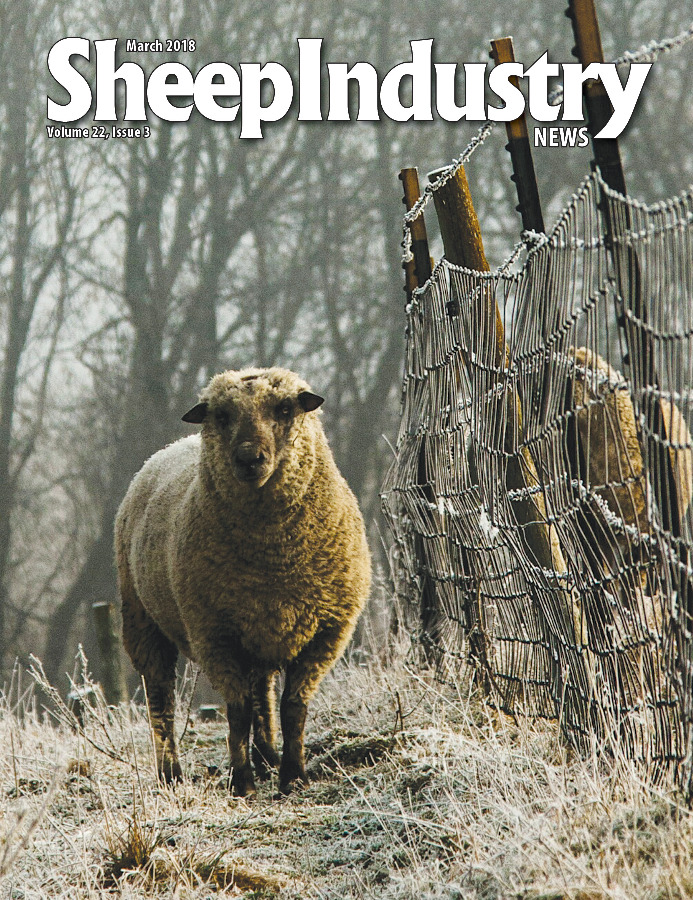
- March 2018
- President’s Notes
- Jerry King Cartoon
- Convention: Sheep Producers Share Concerns with USDA
- Convention: Industry Leaders Recognized
- Convention: MIWW Celebrates 70 Years
- Convention: American Wool Uses Technology
- Convention: Nourish With Lamb Spreads Message
- Convention: PERC Discusses Possible FMD Outbreak
- Convention: Kangols Top Guard Dog Breed
- Convention: Genetic Stakeholders Understand Value of Data
- Convention: Sheep Disease Updates
- Convention: Resource Management Eyes Progress
- Convention: Young Entrepreneurs
- Electronic Grading Approved at Superior Farms
- ALB Picks Denver as Next Target Market
- Wool is Popular at Outdoor Show
- Sheep Inventory Flat in 2017
- Feedlot Report Available
- Young Entrepreneur: Jake Kerr
- Sec. Perdue Names ALB Appointees
- Three Appointed to Sheep Center
- Around the States
- Market Report
- The Last Word
Sheep Inventory Flat in 2017
According to the National Agricultural Statistics Service Sheep Inventory Report, the sheep and lamb inventory in the United States on Jan. 1 totaled 5.23 million – compared to 5.20 million as mentioned in the same report a year earlier. Despite the numbers, the 2018 report says inventory is “down slightly from 2017.”
“All sheep and goats inventory and lamb and kid crop estimates for Jan. 1, 2017, were reviewed using official slaughter, import and export data, and the relationship of new survey information to the prior surveys,” read the report. “A revision of less than 1 percent was made to sheep and lambs inventory and no change was made to the lamb crop.”
According to the report, the 2017 lamb crop of 3.20 million head was down 2 percent from the prior year.
Shorn wool production was 24.7 million pounds, down 5 percent from 2016. The average price paid for wool sold in 2017 was $1.47 per pound for a total value of $36.4 million, down 3 percent. While wool prices soared in 2017, high prices affected fine wools the most, while prices actually dropped for some coarser wools during the year.
States in the Rocky Mountain region – which generally produce fine wools – tended to show increases in wool prices according to the report.
States showing an increase in sheep inventory in 2017 included: Oklahoma (13 percent); Colorado, New York, North Dakota and Texas (6 percent); Kentucky and South Dakota (4 percent); Pennsylvania and West Virginia (3 percent); and Indiana (2 percent).
Sheep death loss during 2017 totaled 213,000 head, down 2 percent from 2016. Lamb death loss decreased 2 percent from 373,000 head to 367,000 head in 2017, according to the report.
View the full report at http://usda.mannlib.cornell.edu/usda/current/SheeGoat/SheeGoat-01-31-2018.pdf.
The report is compiled using a random survey of American sheep producers to provide data for these estimates. Survey procedures ensured that all sheep producers – regardless of size – had a chance to be included in the survey. Large producers were sampled more heavily than small operations, however. About 21,800 producers were contacted and 69 percent of the reports were usable.

